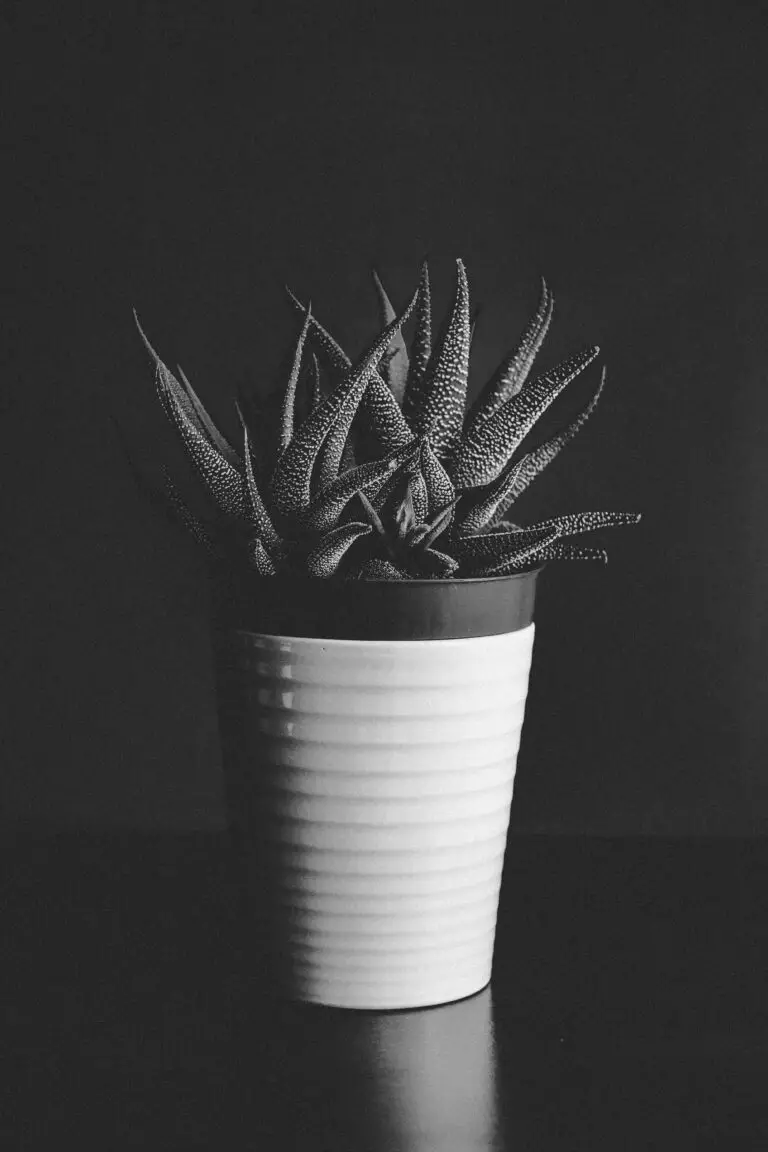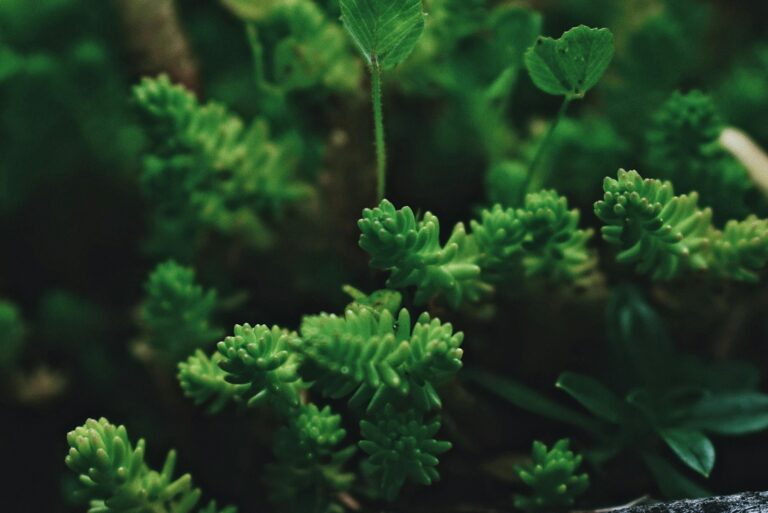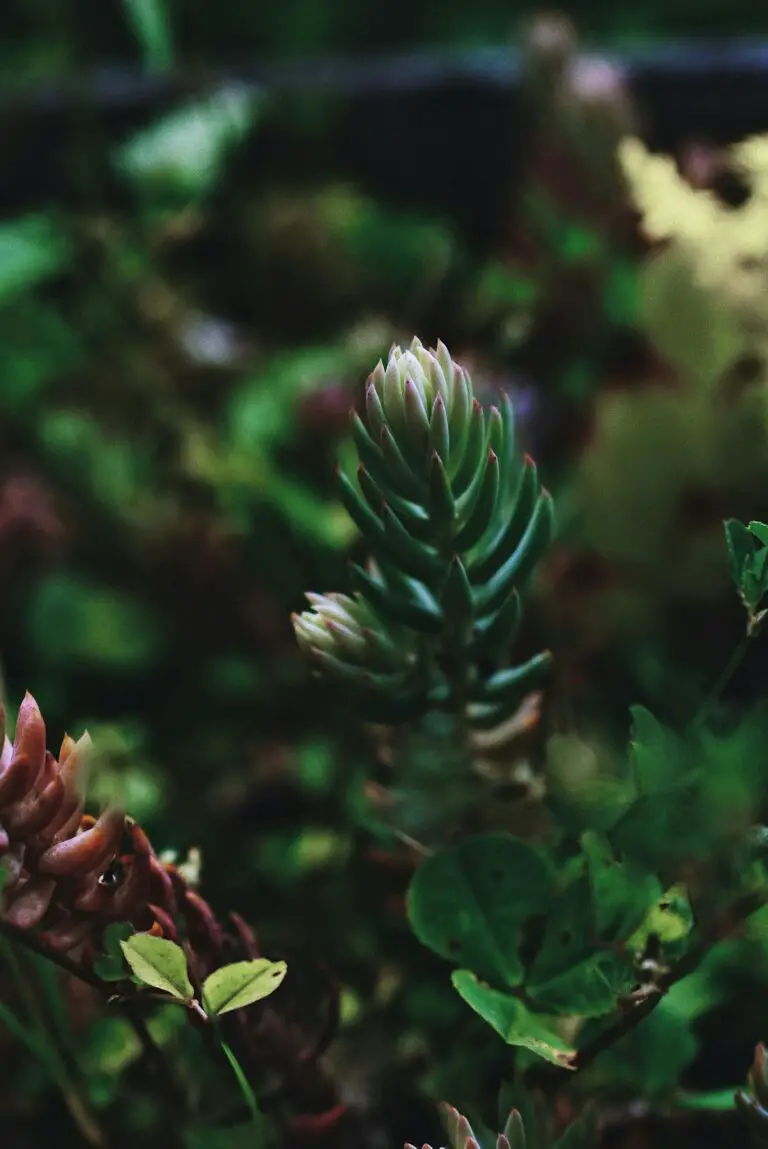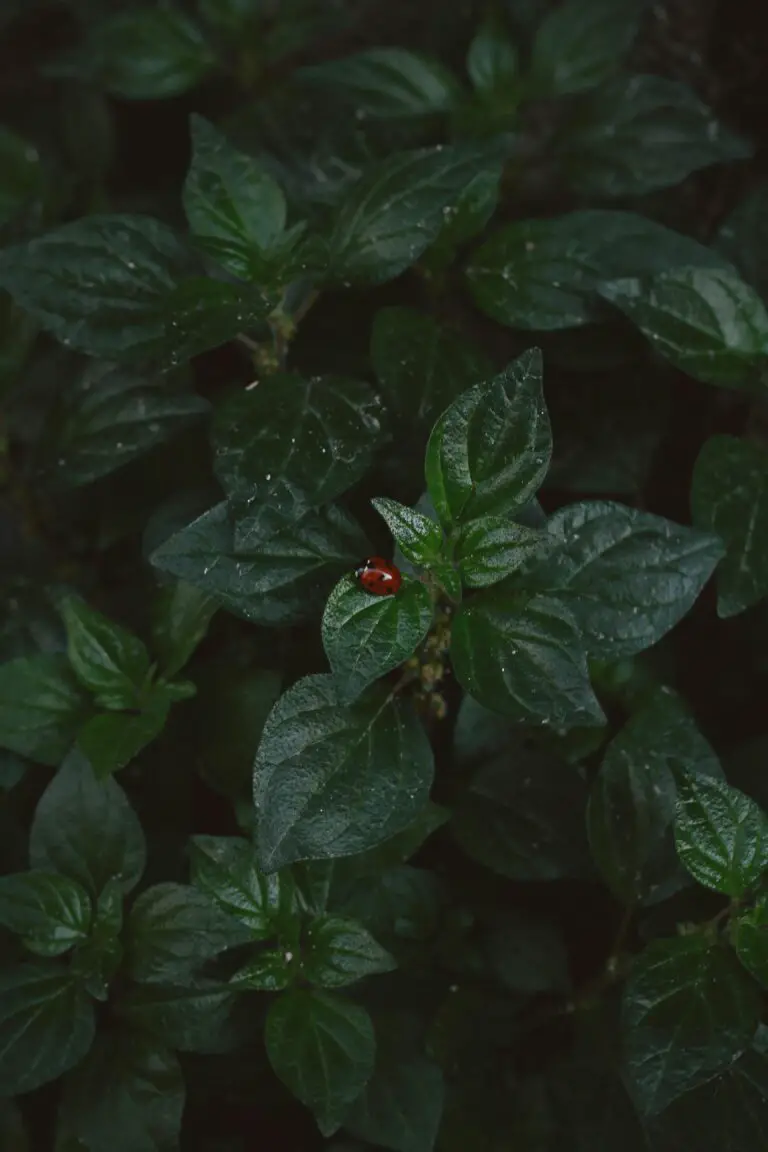Introduction to Sedum Planting
If you’re looking to green up your space with some hardy, unfussy plants, look no further than sedum. These low-maintenance beauties are taking over modern gardens with their resilience and versatility. Picture this: lush, textured ground cover that thrives on neglect, leaving you to enjoy more of your precious weekend. That’s the kind of plant we’re talking about! But to kick off your sedum success story, it’s crucial to nail the timing of planting these succulent stars.
Let’s be real – nobody wants a garden flop. And the key to avoiding that is understanding the proper planting time. It’s like that neighbor who always knows just when to plant their tomatoes for the best summer salads – it’s all about timing! You want your sedum to settle in comfortably without the stress of extreme weather conditions, so they can strut their stuff when the season hits its stride. Getting it right not only ensures your sedum will grow strong; it spares you the heartbreak of plant drama later on.
Imagine waving at your thriving sedum every morning as you sip your coffee. That’s the kind of joyful gardening experience we’re aiming for. But remember, we’re not just popping these plants into the soil willy-nilly. We’re crafting a succulent oasis that will be the envy of the neighborhood – all starting with the wisdom of picking the perfect planting moment.
For a little visual inspiration, check out this video on sedum planting and care:
Bear in mind that while sedum might be easy-going, they do crave a bit of TLC at the start. Take a leaf out of the book of sedum aficionados – these folks are committed to starting their succulent story at the sweet spot of the season. To join their ranks and bask in the glory of a luscious sedum display, dive into the details of well-timed planting. For more tips on sedum care, feel free to browse through these expert succulent care tips.
Understanding Sedum’s Growth Habits
Like a clockwork of nature, sedum plants follow a yearly cycle that’s both fascinating and invaluable for gardeners looking to create a vibrant succulent landscape. If we dive into the life of a sedum, we find a perennial powerhouse that bursts into life in the spring, flourishes through the summer, and then slips into a well-earned dormancy as winter cloaks the garden in frost.
Let’s walk through a year in the life of a sedum, shall we? Imagine it’s early spring: as the chill of winter softens, sedum’s tightly curled buds begin to unfurl, green and ready for action. This marks the perfect moment to plant your sedum—when the soil can be worked and just before new growth begins. But don’t sweat it if you miss this window. Thanks to sedum’s laid-back nature, you’ve got flexibility up your sleeve, and planting can be successful right until late summer.
As the days lengthen and the sun climbs higher, sedum kicks into high gear, reaching for the sky with fleshy leaves and hardy stems. Come summer, it’s showtime—an explosion of blooms that buzz with pollinators. It’s during these sunny days that sedum truly thrives. Remember that while sedum loves the sun, a swathe of light afternoon shade during the hottest days can help it avoid sunburn—just like us!
But all good things must pause, and as autumn leaves begin their descent, sedum plants slowly prepare for their winter nap. This isn’t game over, though—it’s a vital part of their cycle. The plant’s dormancy period is a necessary respite that allows it to conserve energy and survive the cold, only to return with more vigor the following spring.
To get a firsthand glimpse into these captivating growth patterns, check out this enlightening video on sedum’s life stages, straight from a garden expert:
For further reading, immerse yourself in a comprehensive study detailing how the different seasonal stages of sedum can inform your gardening strategies, ensuring that your green-thumb efforts culminate in a lush and healthy sedum display.
Understanding this cycle—the seasonal growth patterns and the importance of dormancy—is the gardener’s secret to timing the planting of sedum just right. It’s respecting sedum’s natural rhythm, tapping into its perennial nature, and aligning your garden calendar with the plant’s life. With this knowledge in hand, you’re ready to choreograph your succulent symphony to perfection. So, when should sedum be planted? With the insight into sedum’s growth habits, you now hold the key to unlocking the ideal planting time for a vibrant, healthy sedum garden.
Deciphering the Best Time to Plant Sedum
Are you dreaming of a succulent oasis that beckons bees and butterflies to your backyard banquet? The key to unlocking that lush, vibrant garden lies in the timing of planting your sedum. Like setting a dinner table for esteemed guests, planting sedum at the right moment ensures a bountiful feast for the eyes.
Picture this: It’s a mild spring day, perhaps lightly misty, and you’re nestled in your garden with a trowel in hand, ready to tuck your sedum into its new home. This isn’t a roll of the dice; timing is your concealed ace. In the temperate embrace of spring or the soft cradle of fall, sedum slips into the soil seamlessly, sparing it the scorch of summer’s rage or winter’s icy grip. These seasons are your golden windows, allowing the roots to establish without stress, in ready anticipation for the extravaganza of growth that spring and summer bestow.
Yet, every region whispers its secrets of when to turn the soil. In zones where frost is a distant memory by March, that month might be your starting block. But should you dwell where winter lingers like a protracted goodbye, waiting until the threat of a cold snap is but a whisper on the wind is prudent. We navigate this delightful dance with a keen eye on local weather patterns, ensuring our fledgling sedums aren’t left in the cold or scorched by an untimely heatwave.

Consider the sedum’s preference for dry feet—their disdain for soggy shoes means careful planning around rainy seasons. A deluge might be heaven for your hydrangeas, but for sedum, it’s the bane of their existence. It’s a divine balance, fostering firm roots while dodging drenching rains. You might find success in environments where the soil’s thirst is quenched, yet it’s capable of slaking off excess water like a well-worn raincoat.
So, fellow green-thumbed artisans, your mission is to observe, to plan, and to plant with the harmony of the seasons as your guide. The result? A thriving community of sedum, reveling in the sanctuary you’ve constructed with the precision of an architect and the heart of a poet.
Spring Planting for Sedum Success
Imagine giving your sedums the best possible start in your garden. Well, spring might just be your secret ingredient! It’s that time when the soil begins to warm up, and the sun graces us with more of its presence each day. This dynamic duo of warmer soil and increased daylight sets the stage for something incredible for your sedums: robust root development and vigorous early growth.
Why does this matter, you ask? When your stonecrop’s roots dive deep and strong, it has the stability and strength to support the luscious succulent growth we all crave. It’s kind of like when a foundation is laid for a house—the sturdier it is, the better everything that comes after.
Let’s paint a picture: as the daylight hours grow longer, your sedum gets to soak in that solar goodness, turning it into energy for pushing out fresh, vibrant leaves and blossoms. And with the soil not too hot nor too cold, it’s like Goldilocks’ perfect scenario for your plants. Not only is springtime sowing great for those mature sedum showoffs, but also for the little rookie cuttings and divvied-up clumps looking to establish themselves in the garden league.
For a tangible example, remember that sedum you planted last spring? The one that’s now the envy of everyone passing by your garden? That’s the power of spring planting—it’s like a natural boost for your plant babies!
Needing more insights on caring for these resilient beauties? Check out our guide featuring expert tips on keeping your sedums in tip-top shape. And don’t forget, whether you’re a seasoned greenthumb or just starting: when it comes to planting sedums, spring is your time to shine!

The Potential of Fall Planting
Imagine a brisk autumn day, the air crisp and a spectrum of leaves blanketing the earth beneath your feet. It’s the season of pumpkin spice and cozy sweaters, but also an excellent time for gardeners to consider the advantages of fall planting for sedum. This hearty succulent, known for its drought-tolerant and low-maintenance nature, greatly benefits from being planted as the temperatures begin to drop.
Why fall, you ask? Well, the cooler conditions work wonders for the newly planted sedum. While the summer sun can be harsh, causing tender roots to stress and plants to wilt, autumn offers a respite that allows these resilient plants to establish their roots without the threat of overheating. The mild weather isn’t just for the comfort of the gardener—it’s a natural aid in helping these succulents thrive.

Picture this: while the above-ground parts of plants are preparing for dormancy, the below-ground parts are still very much alive and kicking. In the case of sedum, this means the roots continue to grow and spread out in the cool soil, creating a solid foundation. Come springtime, this well-established root system allows the sedum to explode with growth, taking full advantage of the warming temperatures and increased daylight.
Moreover, fall planting coincides with the natural life cycle of perennial plants like sedum. By integrating into the garden in fall, sedum is in sync with the rhythms of nature, which prepares it for a vigorous resurgence after the winter lull. Gardeners observe that fall-planted sedums often outperform their spring-planted counterparts, demonstrating more lush and vibrant growth.
Real-life examples abound of fall’s planting magic. Take Ben from Boston: he planted his ‘Autumn Joy’ sedum just as the leaves began to turn last year. By the following summer, his sedum was the star of his garden, flourishing with minimal attention while his neighbors were still waiting for their spring-planted varieties to catch up.
So, when the days start to shorten and the harvest moon rises, remember—it’s not just the end of a season, but the beginning of an opportunity for your sedum to establish its roots, ready to burst into life come spring. By embracing the potential of fall planting, your succulent garden will not only overcome the summer heat but will also promise a lush, vibrant spectacle to admire.
Soil and Sunlight: Preparing for Sedum Planting
Like setting the stage for a grand performance, preparing the right foundation for your sedum starts with the soil. Think of soil like a smorgasbord for your plants: it needs to be rich, but not overly indulgent, and just acidic enough to make your sedum’s taste buds tingle. That’s right, the soil pH should be moderately acidic to neutral—envision a pH range as a cosy hammock, swaying around 6.0 to 7.0, where your sedum can blissfully recline.
But it’s not just about the pH. Like a sponge that knows just when to release water, your soil needs impeccable drainage. Nobody likes waterlogged feet, and sedum’s roots are no exception. If you’re working with clay that clings like a needy friend, consider amending it with sand or gravel. It’ll loosen up the soil, allowing it to breathe and let excess water flow through.
Sunlight is another protagonist in this garden drama. Sedum soaks up the sun like a tourist lounging on the beach. Full to partial sun is their jam, with at least 6 hours of it being the golden ticket to their happiness. When picking a spot to plant, envision your sedum with sunglasses on, just basking in that glow. A south-facing location is usually your best bet to achieve this sun-soaked nirvana. Just be careful not to let them scorch; a little afternoon shade can sometimes be a welcome reprieve during the peak of summer.
Remember our garden performance? Well, even the sun and the soil need a bit of a dress rehearsal. Test your spot by observing the sunlight over a few days, and tweak the soil as though you’re mixing the perfect potting cocktail. Your sedum will thank you with vibrant growth and a show-stopping presence in your garden.

Get your gloves ready, and let’s dig into a soil and sunlight symphony that will leave your sedum singing with joy!
Caring for Newly Planted Sedum
So you’ve planted your sedum at the perfect time, and now the real fun begins! Caring for these little succulent superstars isn’t just about watching the water. There’s a bit more to keeping them happy, so let’s dive right in.
First things first, let’s talk hydration. Watering newly planted sedum is kind of like making the perfect cup of tea — it’s all about balance. Too little, and they’ll be as thirsty as a traveler in the desert; too much, and they might drown in their own pots! A good rule of ‘green’ thumb is to give them a drink when the soil feels dry to the touch but avoid standing water – nobody likes soggy feet, especially not your sedum.
Now, remember that time your neighbor’s cat decided your sedum patch was a luxurious bed? While the feline meant no harm, sedum is delicate in its early days. Don’t fret — just give them a protective shield. A light layer of mulch can act as a cozy blanket, keeping moisture in and pesky paws out.
Speaking of protection, let’s chat about guarding against the elements. During their first year, sedum is as vulnerable as a sunflower in a storm. When that extreme weather rolls in, whether it’s a scorching sun or a sudden freeze, consider a temporary cover-up. A shade cloth or a frost blanket can make all the difference between a sedum that soars and one that sinks.
Let’s paint a picture: imagine your sedum thriving, their lush leaves reaching up to meet the sun — that’s your goal. But remember, this isn’t a race. Patience is key in the game of garden growth. Monitor, adjust, and provide tender loving care, and before you know it, your sedum will be the envy of the block. Use the tips above, and you’ll be well on your way to cultivating a succulent sanctuary that’s the talk of the town.

Mulching Practices for Sedum
Mulch isn’t just an aesthetic choice; it’s sedum’s secret weapon. Think of it like the ultimate sidekick for your supers, protecting their roots from the extremities while keeping the weeds at bay. Organic mulch like shredded leaves or straw can also break down over time, adding an extra nutritional punch to the soil. Remember to keep it light and airy though — a mulch that’s too compact can be a haven for unwanted pests.
Key Takeaways for First-Year Sedum Success
To wrap this up like the perfect present, let’s bullet out the key care tips for your sedum sprouts:
- Water wisely: moist soil, but no paddling pools.
- Add a mulch shield: lightweight, pest-discouraging, and moisture-retaining.
- Defend against weather: employ shade cloths or frost blankets as necessary.
- Be patient and attentive: good things come to those who wait… and observe!
So there you have it, your pocket guide to pampering your newly planted sedum. With these tips, your green babies will thrive, weaving a tapestry of texture and color that uplifts your garden’s spirit. It’s not just about the aesthetics; it’s about creating a personal oasis that resonates with growth and vitality. Keep at it, and watch your sedum flourish under your diligent care.
Troubleshooting Common Sedum Planting Issues
It’s not just about when you plant your sedum; how you plant them matters too! Let’s dive into some of the perplexing issues you might face while establishing these robust succulents in your garden.
Root Rot: The Sneaky Succulent Saboteur
When sedum plants sit in soggy soil, their roots can become too moist—a perfect recipe for root rot. This tricky troublemaker can sneak up on you, turning your lush, vibrant plants into mushy, wilted disappointments. To keep root rot at bay, make sure your sedum is planted in well-draining soil and in an area that doesn’t stay wet. A pro tip to remember: If the soil feels wet, hold off on watering!
Pest Infestations: Little Critters, Big Problems
Sometimes, uninvited guests like aphids and mealybugs decide that your sedum is the perfect feast. These pint-sized pests can be a massive headache, causing your sedum to look lackluster and unhealthy. To send these critters packing, try a gentle insecticidal soap or neem oil treatment, effectively shown by gardeners around the world. However, if you prefer the natural route, introducing ladybugs into your garden can be a delightful and eco-friendly solution.
And speaking of pests, let’s watch a short clip that sheds light on common sedum planting issues and how to resolve them:
Remember, patience is key. It may take a bit of trial and error to find the perfect balance for your sedum, but once you do, you’ll be rewarded with a lush, easy-care succulent garden that’ll be the envy of all your fellow green thumbs.
Multiplying Your Sedum: Tips on Propagation and Spacing
Imagine your succulent garden flourishing with vibrant Sedum varieties, each one a lush feather in your green thumb’s cap. To achieve that lushness, knowledge on when to plant Sedum must be coupled with savvy propagation techniques. Let’s dive into the art of expanding your sedum collection through division, cuttings, and understanding the ever-important plant spacing.
The Art of Division
Think of division as nature’s investment plan; you start with one ‘share’ of a mature sedum plant and split it to create more. Early spring, just as the plants awaken from their winter nap, is the ideal time to gently divide the root ball. With well-considered snips, separate the clumps, ensuring each has a fair share of roots. Replant these portions into prepared soil and watch your botanical investments grow, quite literally!
Crafting Cuttings for Success
Alternatively, sedum cuttings are like cut-and-paste for the garden — snip a 2-4 inch segment from a healthy stem, strip the lower leaves, and allow it to callous for a couple of days. Once calloused, these cuttings are ready to press into well-draining soil. Within weeks, they’ll develop roots, proving simplicity is beauty when it comes to sedum propagation.

Spacing: The Unsung Hero of Plant Health
Just as we revel in our personal space, sedum plants thrive when they have room to spread their leaves. Proper spacing ensures adequate air circulation, minimizing disease risk and allowing each plant to soak up the sun fully. A good rule of thumb is to plant sedum no closer than a foot apart—at this distance, they’ll fill in the gaps, creating that coveted, lush look without overcrowding.
Whether you’re dividing or doting on your cuttings, remember these propagation practices are key to a thriving sedum display. Embrace the journey of sedum growing, and before you know it, your garden will be a testament to your propagation prowess.
Frequently Asked Questions
If you’ve ever found yourself pondering the ideal time to plant sedum or wondering about the care it needs after it settles in your garden, you’re not alone. The world of succulents is enchanting but filled with queries that can bewilder even seasoned gardeners. Fret not, as we dive into the nitty-gritty of planting and caring for these resilient beauties.
Can sedum be planted in the summer?
It’s a hot summer day, and you stumble upon a breathtaking variety of sedum. But is summer a wise time to introduce it to your garden? Absolutely! Sedum, known for its tough, drought-resistant nature, can be planted in the warmer months. Picture this: It’s July, the sun is beating down, and you’ve just found a perfect spot in your yard that’s parched and sun-drenched – a spot that sedum would call paradise. Just ensure it’s not the peak of summer heat, or you might want to provide a bit of shade as it takes root.
How long after planting will sedum bloom?
The anticipation of waiting for sedum to bloom can feel like watching paint dry. But patience, dear gardener! Typically, if you plant sedum in early spring, you might witness it’s stunning blossoms debut in late summer to early fall. Imagine, after a season of growth, your sedum bursts into blooms that attract bees and butterflies, creating a buzz of life in your garden.
Is it necessary to fertilize sedum after planting?
Sedum isn’t the high-maintenance type; it’s more of the independent plant that thrives with minimal fuss. However, that doesn’t mean it won’t appreciate a little nutrient boost. After planting, give it a light application of a balanced, slow-release fertilizer to encourage robust growth. Imagine sedum as the quiet kid in class who, with a little encouragement, really shines – that’s your sedum with a sprinkle of fertilizer.
Planting sedum is like setting the stage for a year-round spectacle. With the right timing and a touch of care, you can ensure that these succulent stars have everything they need to put on an unforgettable show in your garden.




